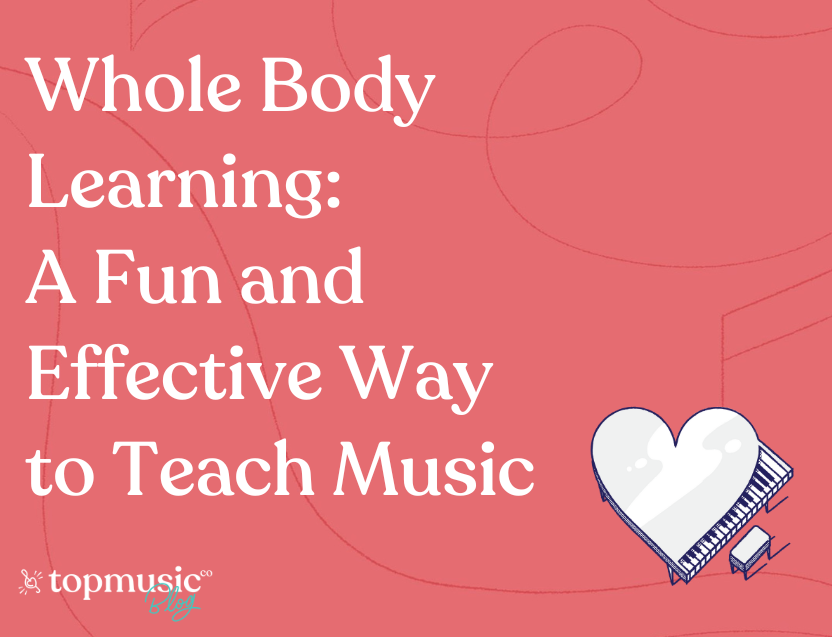Have you ever encountered Whole Body Learning? It’s an approach to teaching developed by Paul Myatt, the creator of ForteMusic and Piano Teaching Success.
In this article, written by Paul Myatt himself, we’re going to skim the surface of this teaching approach.
Table of Contents:
Whole Body Learning is a fresh and engaging approach to teaching music that can be used at any stage for piano or instrumental students. It combines the best ideas from Orff, Dalcroze, and Kodály, with insights from neuroscience about how our brains learn.
These strategies aren’t new, but combining them to create effective music teaching methods is a unique twist. Forte School of Music has used these techniques for over 30 years in the USA, UK, Canada, Australia, and New Zealand. Teachers have found that students not only learn more easily and have more fun but also achieve better musical skills, including aural, rhythmic, performance, improvisation, harmony, and even reading music.
One of the great things about this teaching approach is that all the learning happens during the lesson. Even if students don’t practice between lessons, they often remember what they learned because it’s embodied—meaning it’s a part of them.
Dr. Wayne Bowman says, “The mind is inextricably biological and embodied, and what it can know is always grounded in the material and experiential world.” In other words, if students haven’t embodied the learning in a lesson, they probably won’t remember how to play something at home.
Related: A Whole Body Learning Approach to Guitar Lessons
This teaching approach is quite different from traditional lessons. Traditional methods started in the 19th century when paper became cheap and widely available, making reading music a big focus. Before that, music was taught by ear through listening, movement, and dance.
Neurological research has shown that the best cognitive brain development in music learning involves:
Whole Body Learning can be adapted for students of any age and helps teachers create fun, interactive educational environments. Interactive learning is especially engaging for Generation Alpha, the current generation of beginners born since 2010. Research shows that students in interactive environments experience better academic and cognitive development. Teaching that involves active interactions leads to higher success rates.
For piano teachers, this means moving beyond just reading music and playing. This approach involves various active learning experiences that are multisensory and multimodal.
The first phase of this teaching approach is “Listening with Purpose.” During this phase, students use tools like exploring, singing, moving, playing, or improvising.
Listening with Purpose might involve using a YouTube clip, the teacher playing, or a backing track with all the musical elements like rhythm and harmony. Playing with a backing track helps students develop important skills, much like playing in an ensemble.
Everyone!
This approach works well for both neurotypical and neurodiverse students.
Teachers are often surprised at how quickly students grasp concepts and ideas with this approach.
Learn more about Whole Body Learning (and 7 other alternate teaching approaches) in this edition of the TopMusicMag:
